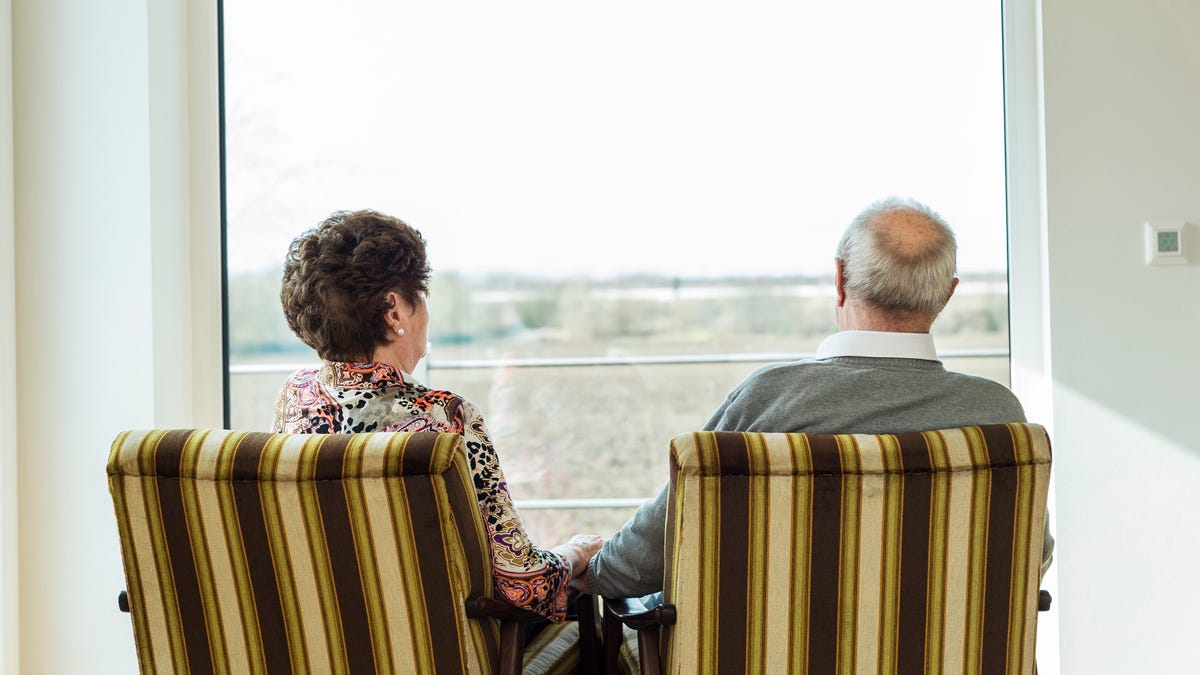Tech can help the elderly...if they use it
A growing number of apps and devices are designed to help manage care of older patients, but the nagging reality is that they're going unused. At least for now.

Bev Dutro's 82-year-old mother has trouble remembering things. Sometimes she can't recall what she wore or who visited her last.
Dutro and her two siblings found caring for their mother, who was diagnosed with Alzheimer's five years ago, increasingly difficult. They miscommunicated about visits and doctor appointments. When their mother imagined a fire in the house, they had a hard time figuring out if it was true.
So a year and a half ago, the family turned to Carely, a smartphone app. Through Carely, the three schedule visits and post updates on their mother's condition, and they track medical information. That's meant less time phoning, emailing and texting to stay on top of it all.
"It really was a time reliever and a mental-health saver," said Dutro, who lives in Dayton, Ohio.
Dutro's family isn't alone. Across the US, caregivers are turning to apps, devices and websites, collectively known as "age tech," to do everything from manage medications to coordinate care. This includes technology designed specifically for older family members, like a medical alert necklace, as well as devices like iPads.
Though adoption of this technology has been slow, the market is huge and getting bigger. More than 34 million American adults provide unpaid care to someone 50 or older, according to a survey conducted last year by the National Alliance for Caregiving. And the US Census Bureau says the number of people who need care will only grow: By 2060, the 65 and older age group will more than double, to 98 million people (from 46 million in 2014).
Technology companies are rushing to meet what they see as a growing demand, and investors are paying attention. Funding for companies making health-care products for people aged 50 or older has more than quadrupled over the last several years, to nearly $2 billion last year from $425 million in 2010, according to StartUp Health, an investment firm.
"The economic power of the 50-plus market is almost half of the US economy," said Stephen Johnston, co-founder of Aging 2.0, a tech company that connects entrepreneurs with the elder-care industry. Johnston estimates that the number of age-related startups tripled in the past three years.
At an Aging 2.0 Expo in November, hundreds of senior-care products were on display. There were sensors that alert caregivers to the activity of Alzheimer's patients, an employment website for caregivers and a full-body suit that simulates the physical experience of aging to help people better understand what it feels like and encourage them to make plans for growing old.
Jenny Thomas, a 55-year-old nurse who works with older patients, said she's used ScriptDash, a service that lets her order prescribed drugs for her patients by email or phone and have them delivered for free, usually the next day.
"In the old days, you'd have to wait on hold and they didn't always deliver," she said regarding most medications. Now Thomas can more easily order prescriptions from the field. A side benefit: She doesn't have to wait on hold as much as when she called regular pharmacies, because Script Dash is available 24-7.
Unpaid caregivers, like Dutro and her siblings, also find technology that's made specifically for older people to be useful. One example is a personal emergency-response device called the Eddy Health Alert, a necklacelike gadget that calls for help when the wearer presses a button on it.
Rosa Romano, who works at Caring.com, said her family relies on the EddyHealth Alert necklace as a safety net in case her 84-year-old mother's vertigo acts up.
Rosa Romano has relied on the device for two years as a safety net in case her 84-year-old mother's vertigo acts up. Romano, who works at Caring.com, one of the largest online caregiver websites, said the alert necklace lets her mother continue living independently.
"She's very attached to it," Romano said.
To be sure, many caregivers find that incorporating technology into their routines isn't so easy. A recent survey of roughly 2,100 respondents by Caring.com found that less than 15 percent of families incorporate these types of products.
Experts say part of the problem is that the young, mostly-male tech programmers making these devices don't have a good enough understanding of the lives of unpaid caregivers, who tend to be older women. The result is that some products aren't designed as thoughtfully as they should be for their potential users.
Some people, for example, see the personal emergency-response necklace that Romano's mother uses as removing their sense of independence. Aging 2.0's Johnston said his parents and their friends have been reluctant to invest in one for that reason.
Another common complaint is the lack of support. Many caregivers and seniors find troubleshooting these devices much harder than they expected.
Perhaps the biggest obstacle is time. Caregivers are so busy with work and family commitments that they don't have time to find new tech products or learn how to use them.
Some companies are hoping to solve that by working directly with organizations that employ or understand the needs of caregivers. Carely, for example, partners with health-care providers, like the large nonprofit Hospice of Dayton, which share the app for free with clients and community members. This not only gives Carely access to its intended audience, but it also sets up an informal network that can help users if they run into problems.
Carely has since partnered with 35 health-care organizations. Typically, about 30 percent of the community within those organizations uses the app within the initial two months.
Dutro found out about Carely when its CEO visited her Alzheimer's support group. Now she's sharing her experiences with the group as well as teaching them about other useful tech.
"Technology makes a difference," she said.

